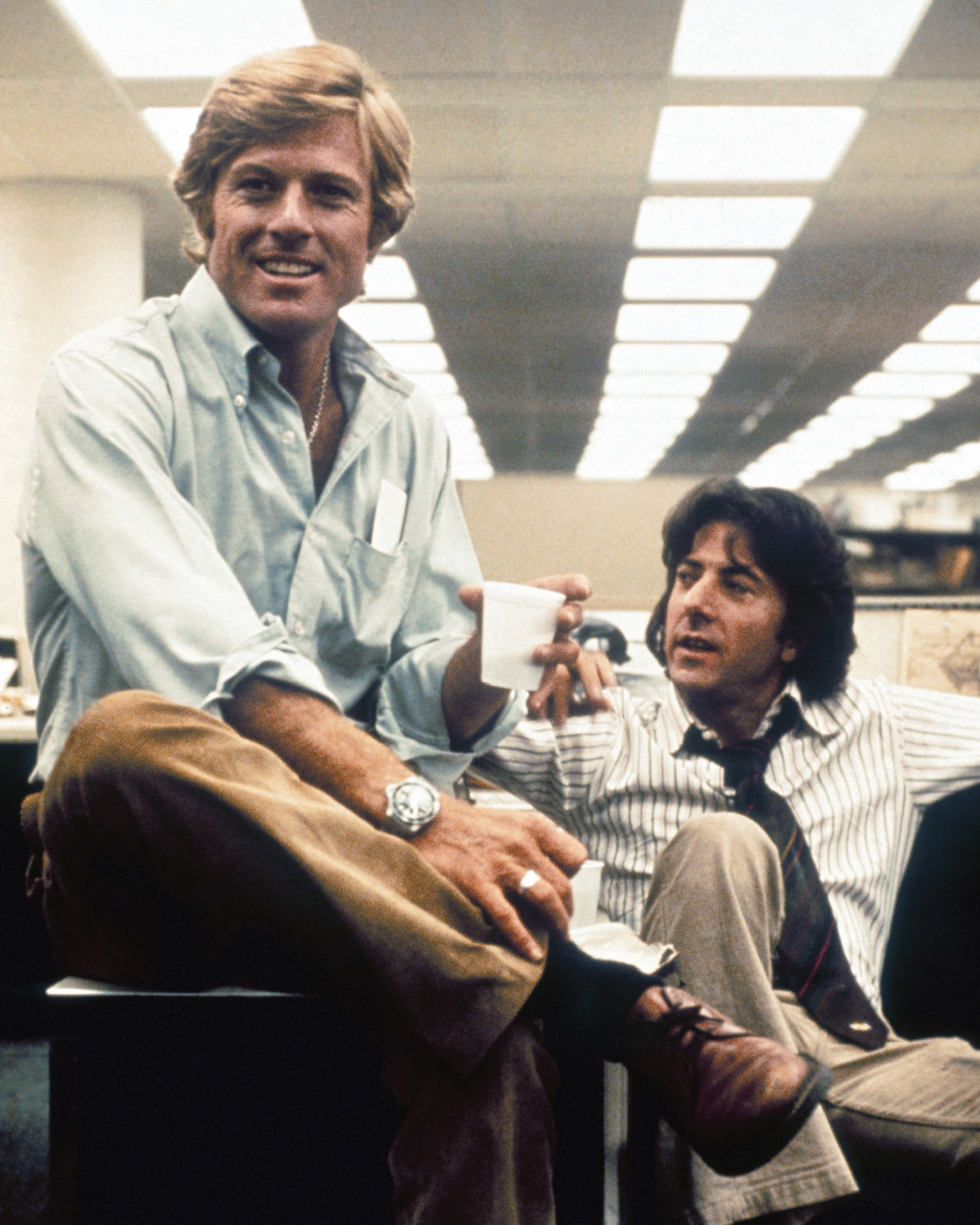The Culture of Journalism: Values, Ethics, and Democracy
Printed Page 383
385
Modern Journalism in the Information Age
391
Ethics and the News Media
395
Reporting Rituals
399
Journalism in the Age of TV and the Internet
404
Alternative Models: Public Journalism and Fake News
407
Journalism in a Democratic Society

Dustin Hoffman and Robert Redford in the 1976 adaptation of All the President‘s Men.
The scandal erupted on June 17, 1972, when five men were arrested for breaking and entering into the Democratic National Committee headquarters at the Watergate office complex in Washington, D.C. The burglary turned out to be just one of many illegal activities that President Richard Nixon had authorized and that were carried out by Nixon’s staff. These activities included campaign fraud, political espionage, illegal wiretapping, and a secret slush fund laundered in Mexico to pay those who conducted the operations and to buy their silence.
The break-in spurred intense media coverage, most notably by the Washington Post. Reporters Bob Woodward and Carl Bernstein uncovered information suggesting that knowledge of the break-in, and attempts at a cover-up, extended into the Justice Department, the FBI, the CIA—and even the White House. During their investigation, Woodward and Bernstein came under immense pressure from the Post to keep producing accurate stories while being challenged by skeptics to reveal the names of their anonymous sources—which they resolutely refused to do. They protected the identity of their main source—Mark Felt, known only as “Deep Throat”—for more than thirty years. Felt, the former associate director of the FBI, admitted shortly before his death in 2005 that he had been the reporters’ key source.
The two journalists, working under editor Ben Bradlee, won renown for being the first to report on the political “dirty tricks” used by the committee managing Nixon’s reelection campaign. After publishing a book about the scandal—All the President’s Men, which was made into a movie in 1976—the reporters became celebrities and inspired widespread interest in investigative journalism.
Investigations into the scandal by various oversight bodies eventually forced the president to ask for the resignations of key aides, including H. R. Haldeman and John Ehrlichman, who were both indicted and sent to prison. Nixon also fired White House Counsel John Dean, who had testified before the Senate and who eventually became the key witness against the president.
As Nixon’s position eroded, the House of Representatives began formal investigations into possible impeachment. On August 8, 1974, the president (apparently bowing to the inevitable) announced his resignation.
Woodward and Bernstein’s accomplishments reveal journalism’s power—to contribute to the downfall of a U.S. president, fuel the creation of new works in other media (including books and movies), and reshape young people’s career aspirations. The two reporters’ experiences also illuminate the tough constraints journalists operate under—including pressure to produce timely stories, to follow strict criteria for determining what’s newsworthy, to reveal their sources, and to challenge authority figures. In fact, in terms of public trust of news media performance, the coverage of Watergate by the print and TV news in the 1970s is considered a high point for U.S. journalism. Since the mid-1970s, public confidence in the news media has eroded and declined steadily.
JOURNALISM IS THE ONLY MEDIA ENTERPRISE that democracy absolutely requires—and is the only media practice and business specifically protected by the U.S. Constitution. However, with the decline in traditional news audiences, mounting criticism of “celebrity” journalists, the growth of partisanship in politics, and the rise of highly opinionated twenty-four-hour cable news and Internet news blogs, mainstream journalists have begun losing their credibility with the public.
In this chapter, we examine the changing landscape of journalism and explore its role in our lives today by:
- looking at journalism in the Information Age, including changing definitions of “news” and the evolution of journalism’s values
- exploring ethics and the news media, including dilemmas journalists face (such as whether to invade someone’s privacy to get information) and approaches to resolving ethical questions
- taking stock of reporting rituals (such as focusing on the present and relying on experts)
- considering journalism in the age of TV and the Internet, by comparing print and TV news and assessing the opportunities and challenges that the Internet poses for journalism
- gaining familiarity with alternative models of journalism, such as public journalism, fake news, and satiric journalism
- asking what role journalism might play in our democracy as a force for social responsibility and for greater public discourse